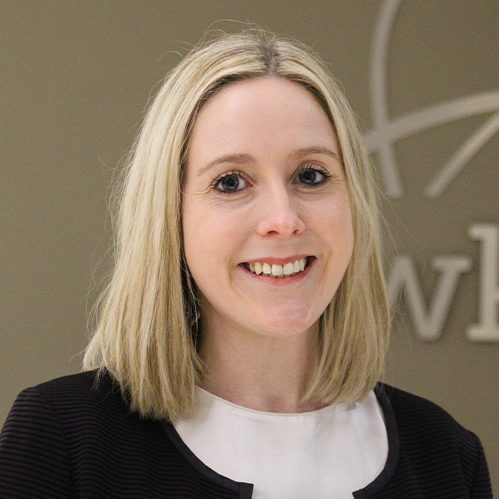The CQC’s Single Assessment Framework is here, but are providers ready for it?

The CQC’s new Single Assessment Framework (“SAF”) inspection regime has now been rolled out across the country and as with any new approach to inspection it is common for there to be uncertainty and confusion around it. A number of organisations have also commented publicly on the fact that the SAF appears to make it deliberately difficult for providers to challenge the CQC. I share these concerns but whilst the SAF (in its current form) exists, it is vital that providers familiarise themselves with the new process as best they can.
How will continuous monitoring change the way that ratings are given?
Under the SAF, CQC Assessors will continuously monitor quality, safety and risk for services in their area and evidence will be gathered in a variety of ways, not just through inspections. Ongoing assessment means that the CQC will have the ability to update ratings more regularly instead of only after an inspection. Evidence that the CQC collects or information received can trigger an assessment at any time.
How will the new quality statements and scoring impact on ratings under the SAF?
The five key questions (is the service Safe, Effective, Caring, Responsive and Well-led?) and the four ratings of Outstanding, Good, Requires Improvement or Inadequate remain the same but within the ratings, the CQC will use a scoring framework which assesses the quality of a service.
34 new quality statements have been introduced under the key questions and they replace the previous Key Lines of Enquiry (“KLOEs”). These quality statements known as “We” statements (i.e “We the provider”) link to the relevant regulations and set out what providers are doing in their service.
The CQC scores each quality statement under the key questions by considering the following six evidence categories:
- People’s Experiences (“I” Statements)
- Feedback from staff and leaders
- Feedback from partners
- Observation
- Processes
- Outcomes
Depending on what the CQC finds, it will assign a score of 1-4 to each evidence category as follows:
1 = Evidence shows significant shortfalls in the standard of care
2 = Evidence shows shortfalls in the standard of care
3 = Evidence shows a good standard of care
4 = Evidence shows an exceptional standard of care
Evidence category scores are added together to give a quality statement score. Quality statement scores are then combined to give a total score for each key question.
Ratings for a service are based on adding up scores from each quality statement which will then be considered against the maximum score that could have been obtained. This is converted into a percentage score to give an overall rating. The key question percentage scores are set out below:
- 25 to 38% = Inadequate
- 39 to 62% = Requires Improvement
- 63 to 87% = Good
- over 87% = Outstanding
The CQC can update scores for different evidence categories at different times. Any changes in evidence category scores can then update the existing quality statement score and in turn the overall rating. The CQC’s rationale for using a scoring system as part of its assessment is that it will assist providers by giving an indication of how close the service is to another rating. The scores will also help the CQC determine if quality is moving up or down within a rating.
Providers should note that rating limiters which were previously only relevant to the Well-led key question will now apply to all key questions equally under the SAF. An example of this is if a key question score is within the Good range but there is a score of 1 for one or more quality statements, the rating would be limited to Requires Improvement.
Factual accuracy check and new inspection reports
Following an inspection, the CQC will email providers a link to view the draft inspection report online. Providers will then be able to enter comments about factual accuracy against each section of the draft report and upload evidence to support any challenges they are making. The 10 working day time limit to submit factual accuracy comments remains the same.
Inspection reports under the SAF will be shorter in length and reports will contain sections for each area of the framework that the CQC has looked at during the assessment including providing an overview of the service, the key questions that were assessed and the quality statements that were considered under the key questions. For any quality statements that have not been considered during an assessment, they will be pre-populated based on a provider’s previous rating.
How is the CQC’s provider portal changing?
The CQC’s new provider portal will be available to all providers to join from 11 March 2024 and the existing provider portal will become read-only which means that providers will no longer be able to use that portal to make changes or send new information.
From 11 March 2024, providers will be able to submit the following notifications through the new provider portal:
- SN16: Death of a person using the service
- SN17: Death of a detained mental health patient
- SN18: Allegations of abuse
- SN18: Outcome of an application to deprive a person of their liberty (DoLS)
- SN18: Events that stop a service running safely or properly
- SN18: Police involvement in an incident
- SN18: Serious injury to a person using a service
Providers need to ensure that the contact details that the CQC holds for their organisation are correct as providers will need to sign up to the new portal using an email address that the CQC has on record.
What’s next and what can care providers do in the meantime?
The CQC has said that it will learn from feedback received from providers about the SAF and will review how it is working and timescales involved until the end of June 2024.
The CQC will then decide the frequency of assessment based on what it has learnt over the first six months, its view of regulatory risk and issues affecting health and care systems. Once the new frequencies have been decided, the CQC will publish a schedule for planned assessments.
Whilst the sector awaits further information and guidance, providers need to ensure that they are familiar with the 34 quality statements and understand how they link to the specific evidence categories, in particular the “I” statements, as this will be a key area of focus for the CQC.
If your service is experiencing any issues with the CQC it can be helpful to seek specialist legal advice. Our lawyers at RWK Goodman can assist with this. For further information, call:
Read more Health & Social Care articles from RWK Goodman:
View more articles related to Health and Social Care








